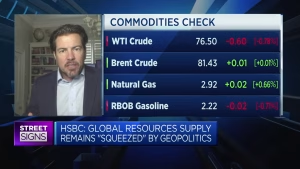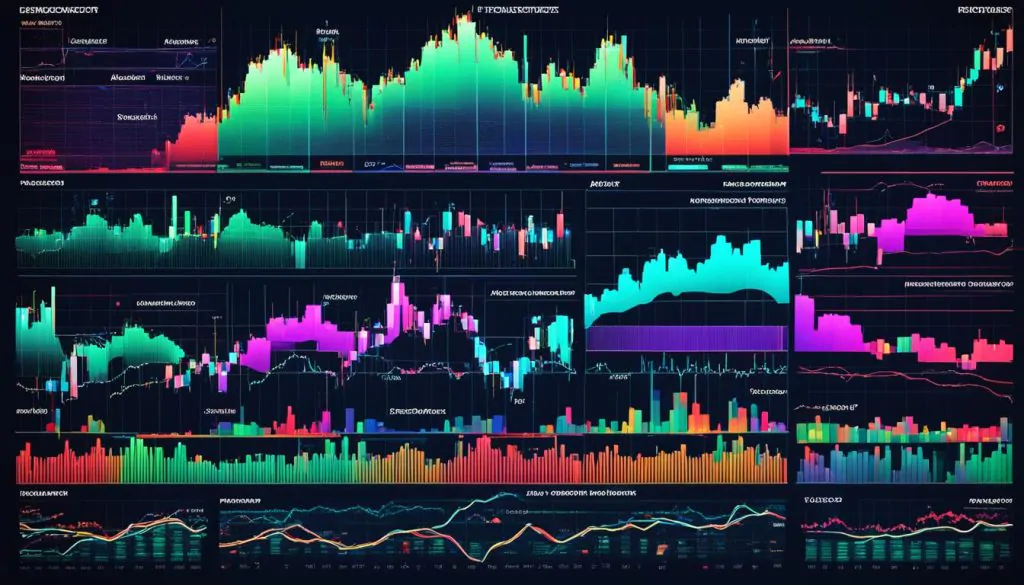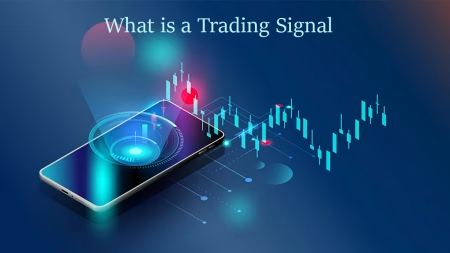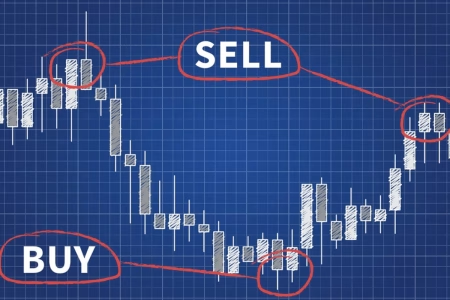In the sophisticated landscape of trading, a comprehensive understanding of top 10 technical forex indicators is vital for any investor seeking to harness the complexities of the market. These time-tested tools of technical analysis empower traders to navigate through choppy financial waters with a clear view of both current conditions and future market projections. As traders worldwide continue to rely on refined trading signals and chart patterns, these indicators have grown from convenient complements to indispensable instruments in the crafting of astute trading strategies.
Key Takeaways
- Top technical indicators serve as a foundation for reliable market analysis, providing essential insights into price movements and trends.
- Building a trading strategy around these indicators can significantly enhance the accuracy of forecasting future market behavior.
- Understanding chart patterns and signals through these indicators is key for making informed, data-driven trading decisions.
- While individual indicators offer value, their power is maximized when synergistically utilized as part of a comprehensive analytical approach.
- Regularly applying these top 10 indicators can improve traders’ ability to identify and react to market volatility and trends.
Understanding the Role of Technical Indicators in Trading
Within the sphere of trading and investment, technical analysis stands out as a crucial methodology for interpreting market dynamics and informing decision-making processes. At its core, this analysis utilizes best technical indicators, sophisticated tools that evaluate historical price action to forecast future trends. The essence of these indicators lies in their ability to turn raw data into accessible trading signals that offer a strategic edge.
Technical indicators can be broadly classified into two categories: leading and lagging. Leading indicators are proactive, providing early warnings about possible future price movements, while lagging indicators offer a reflective view, confirming patterns that have already emerged.
- Leading Indicators: Often used to apprehend the probability of new trends, these can give traders the advantage of entering markets preemptively.
- Lagging Indicators: Key in validating ongoing trends, these signals enable traders to join movements with established momentum, reducing risk.
Understanding and applying these stock market indicators within diverse markets, such as forex, equities, and commodities, is an art that, once mastered, can significantly elevate a trader’s ability to identify lucrative opportunities. It is not solely about recognizing the patterns but interpreting them accurately amidst market noise.
Amongst the bedrock of technical indicators is a subset known as oscillator indicators. These function by tracking momentum and are particularly valuable when markets are not displaying a clear trend. Conversely, overlay indicators are superimposed directly onto price charts, facilitating direct comparison of trends.
Ultimately, intertwining various technical indicators can lead to a multi-faceted view of the markets, allowing for a more nuanced approach towards trading. Traders who leverage such an arsenal, aligning it with comprehensive market analysis and risk management strategies, are the ones who tend to achieve consistency in their trading outcomes.
Delving into Moving Averages
Moving averages stand as one of the most fundamental components within the realm of technical analysis. These versatile momentum indicators not only assist in smoothening out price volatility but also act as an essential tool for identifying market trends. By comparing simple moving averages against exponential moving averages, traders gain profound insights into market dynamics.
Simple Moving Average (SMA)
The Simple Moving Average (SMA) is a calculation that takes the arithmetic mean of a given set of prices over a specific number of days in the past; for instance, 10, 20, or 50 days. Essentially, SMA serves to even out price data by continually updating as new prices become available, thereby allowing traders to identify stable trends in the midst of short-term fluctuations.
Exponential Moving Average (EMA)
In contrast to the SMA, the Exponential Moving Average (EMA) places a greater weight and significance on the most recent prices. This sensitivity to new market data renders EMA a more preferred choice for traders looking for trends that react more considerably to recent price movements, making it a dynamic component in various trading strategies.
| Indicator | Characteristic | Common Usage |
|---|---|---|
| SMA | Equal weighting of all data points | Long-term trend analysis |
| EMA | Higher weighting to recent data | Short-term trend analysis and trading |
| Combined Use | Validation of trend strength and direction | Refinement of entry and exit points |
Understanding the nuances between SMA and EMA is vital for investors who rely on moving averages as a cornerstone of their technical trading approach. When applied intelligently, these moving averages can enhance the precision of entering and exiting the market, providing clarity amidst the inherent uncertainty that trading brings.
Advantages of Exponential Moving Averages
In the realm of technical analysis, the exponential moving average (EMA) is highly regarded as one of the top 10 forex indicators. Recognized for providing traders with a dynamic edge, EMAs are pivotal in the world of best indicators for forex trading. One of the foremost advantages of the EMA is its sensitivity to recent price movements, proving crucial in fast-paced markets.
Unlike its counterpart, the simple moving average, EMAs prioritize recent data points, thereby allowing traders to discern market momentum with greater immediacy. This distinction is particularly valuable in forex markets, where currency pairs can exhibit rapid price fluctuations due to geopolitical events, economic news releases, or changes in monetary policy.
- EMAs reduce lag inherently present in simple moving averages, offering a more timely reflection of current market conditions.
- The utilization of EMAs ranging from the short-term 12- and 26-day to longer-term 50- and 200-day facilitates both short and long-term trading strategies.
- EMAs serve as dynamic support and resistance levels, which aid traders in making informed decisions regarding entry and exit positions.
Moreover, when EMAs are employed together with other key indicators, they become instrumental components in a comprehensive analytical toolkit. This synergy between various indicators broadens a trader’s ability to interpret market sentiments and potential trend changes.
For instance, a common strategy involves the use of dual EMAs in a crossover system—a shorter-term EMA crossing over a longer-term one may signal a change in trend direction. The precision of EMAs in identifying trend reversals makes them indispensable for traders aiming to capitalize on market movements.
Coupled with informed market analysis, exponential moving averages represent an invaluable tool for both novice and veteran traders looking to enhance their trading acumen.
Mastering the Stochastic Oscillator
The stochastic oscillator stands as a pivotal momentum indicator in the toolkit of a seasoned trader. Utilized for gauging market velocity, this powerful tool compares an asset’s closing price to its price range over a specific period, yielding insights into potential oversold and overbought market conditions. Traders rely on its sensitivity to market changes to pinpoint entry and exit points with greater precision.
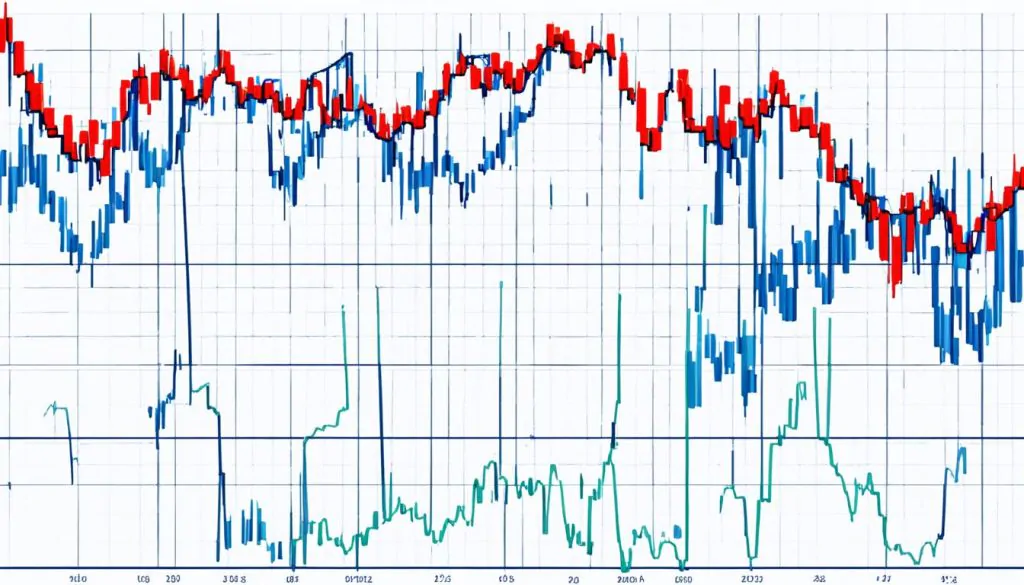
By reading its scale, which stretches from 0 to 100, investors monitor the strength and potential exhaustion of a trend. A reading above 80 may indicate an overbought market state, suggesting a potential sell-off, while a number below 20 signals an oversold market, where buying opportunities might arise. Navigating these territories requires a nuanced approach to avoid costly misjudgments influenced by short-term market fluctuations.
| Stochastic Indicator Range | Market Condition | Recommended Action |
|---|---|---|
| 0-20 | Oversold Market | Consider buying opportunities; prepare for potential trend reversal |
| 20-80 | Normal Market Conditions | Apply additional analysis; monitor for breakout/breakdown signals |
| 80-100 | Overbought Market | Assess for selling opportunities; watch for weakening trend momentum |
Selecting the appropriate settings for the stochastic oscillator is crucial for its effectiveness. Typically, a 14-day period is applied; however, smoothing the results with a moving average can refine the signals. Adequately calibrated, the stochastic oscillator becomes an indispensable facet of a trader’s strategy, providing clarity amid the unpredictable ebbs and flows of the market’s momentum.
Recognizing the oscillation patterns alongside other momentum indicators can offer a formidable edge in the competitive trading environment. The stochastic oscillator shines a light on the underlying currents that often precede significant market events.
Trading with Moving Average Convergence Divergence (MACD)
The Moving Average Convergence Divergence (MACD) stands among the premier momentum indicators in a trader’s toolkit. By providing valuable trading signals, it serves as a go-to resource for those looking to capitalize on market dynamics. Let’s delve into the MACD’s details, understanding its signal lines and what the histogram reveals about market sentiment.
Understanding MACD Signal Lines
The MACD is revered for its ability to deliver timely trading signals, guiding entries, and exits with a precision that resonates with both novice and veteran market participants. It operates through two lines: the MACD line, which is the difference between the 12-day and 26-day exponential moving averages, and the signal line, often a 9-day EMA of the MACD line itself. By observing the crossover of these lines, traders perceive potential momentum changes and adjust their strategies accordingly.
MACD Histogram and Market Sentiment
Adjacent to the MACD signal lines is the MACD Histogram, a graphical representation that adds depth to the analysis of market sentiment. It offers a measure of the divergence between the MACD line and its signal line. When the histogram is above the zero line, it indicates bullish momentum, whereas a position below signifies bearish tendencies. Sharp movements in the histogram can forewarn of impending changes in market direction, giving traders the foresight necessary to stay ahead.
| MACD Component | Function |
|---|---|
| MACD Line | Shows the difference between the 12-day and 26-day EMA |
| Signal Line | 9-day EMA of the MACD Line, indicating buy/sell signals |
| Histogram | Visual representation of the distance between the MACD and Signal lines |
| Crossover Signals | Bullish when MACD crosses above Signal, bearish when below |
| Zero Line Cross | Confirms the overall market momentum as bullish or bearish |
Trading with MACD empowers investors to align closely with market rhythm, ensuring they harness the potential within each momentum shift. Its integration into comprehensive trading systems continues to underscore its enduring relevance in the world of finance.
Profiting from Volatility with Bollinger Bands
Utilizing Bollinger bands, a type of volatility indicators, can markedly enhance a trader’s ability to analyze market dynamics. Recognized as one of the top 10 technical indicators, Bollinger bands effectively frame price movements by creating a dynamic envelope around price action. This offers a visual illustration of an asset’s volatility.
John Bollinger’s notable contribution to technical analysis is predicated on the concept that prices tend to remain within an upper and lower band. When prices repeatedly touch the upper band, the market may be considered overbought; conversely, contact with the lower band suggests an oversold condition. Through close observation of band expansion and contraction, traders can gain insights into potential market direction and intensity of trend movements.
We can summarize key aspects of Bollinger bands in the context of trading:
- These bands are adaptable, automatically widening during periods of high volatility and contracting during quieter trading times, which clues traders into the market’s calming or heating up.
- A common strategy involves watching for price breakouts above or below the bands as potential signals of significant moves and possible entry or exit points.
- When combined with other market indicators, like the Moving Average Convergence Divergence (MACD), traders can justify trades with better precision.
Whether you’re trading equities, indices, or forex, integrating Bollinger bands into your analytic arsenal can provide a deeper understanding of market volatility—an indispensable facet for crafting well-informed trading strategies.
Determining Market Extremes with Relative Strength Index (RSI)
The Relative Strength Index (RSI) stands prominently among momentum indicators, providing traders with a quantified evaluation of an asset’s current momentum vis-à-vis its historical performance. This evaluation is particularly useful for identifying oversold assets that may be due for a rebound, or conversely, overbought assets that could be on the verge of a price pullback.
With its scale set from 0 to 100, RSI offers a straightforward metric: readings above 70 suggest an overbought condition, while those below 30 imply an asset might be oversold. Traders consider these readings as potent signals that a trend might be approaching a point of exhaustion, necessitating a strategic response.
However, the context is key in RSI analysis. For instance, during strong trends, the RSI can stay in overbought or oversold territories for extended periods, challenging the conventional wisdom that an asset will immediately correct from these extremes. Thus, discernment is crucial when it comes to acting on the signals emitted by the RSI.
- Overbought signals may indicate a potential for selling or shorting opportunities as the market could correct.
- Oversold readings often provide a cue for traders to look for buying opportunities, anticipating an upcoming price increase.
While RSI is a powerful standalone tool, its effectiveness is further enhanced when combined with other technical analysis methodologies. By corroborating the RSI’s signals with factors such as trend lines, moving averages, and market fundamentals, traders can formulate a more comprehensive market outlook and make well-informed decisions.
In conclusion, the RSI is not only essential for pinpointing market extremes but also serves as a fundamental component for traders looking to optimize their entry and exit points. Through meticulous analysis and strategic application, the RSI can be an integral part of a successful trading approach.
Fibonacci Retracement as a Strategic Trading Tool
Employed by canny investors, Fibonacci retracement shapes itself as an indispensable instrument in financial market analysis. This mathematical approach not only forecasts potential support and resistance levels but also elegantly blends the theory with practice, especially when faced with potential trend reversals.
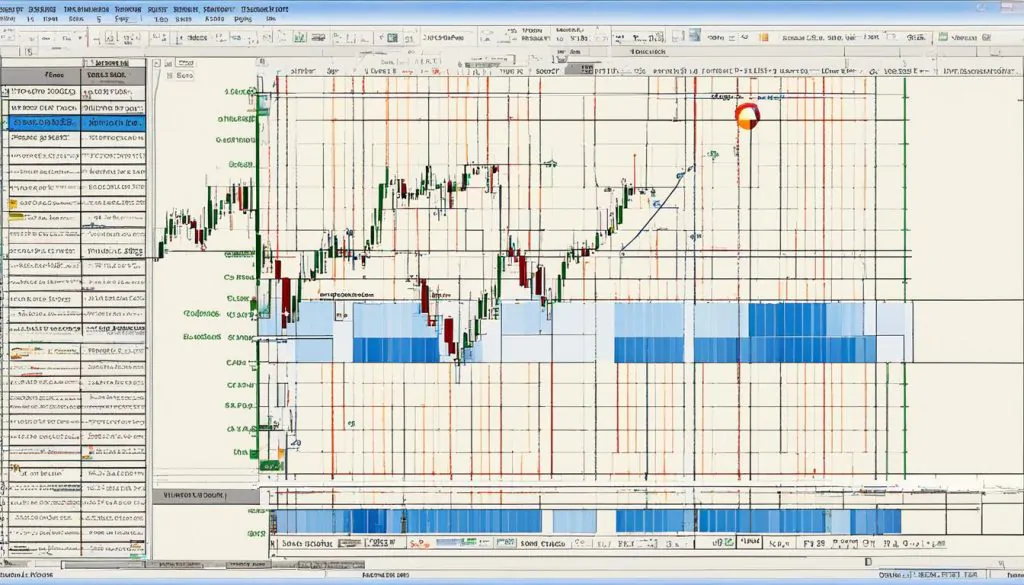
Delving into the enigmatic realm where numbers define market territories, traders utilizing this tool can intimate when a security’s price is ripe for a correction or continuation of the trend. It’s indeed among the top 10 forex indicators revered for its precision and efficacy.
Recognizing Support and Resistance Levels
Decoding the patterns engraved within market price movements, Fibonacci retracement unveils potential battlegrounds for bulls and bears—the well-known support and resistance thresholds. These critical junctions, derived from Fibonacci sequences, guide traders towards making more informed decisions regarding entry and exit points in the markets.
Fibonacci in Trend Reversals and Pullbacks
| Fibonacci Level | Description | Application in Trend Reversals | Application in Pullbacks |
|---|---|---|---|
| 0.236 | Shallow retracement level, commonly observed after a strong price movement. | Used for quick retracements in steep trends. | Preferable for traders banking on the continuation of a strong trend. |
| 0.382 | A moderate pullback, often signaling the first level of significant support or resistance in a trend. | Traders observe this level for potential trend exhaustion or reversal signs. | Suitable for entry points if the original trend is expected to resume. |
| 0.500 | Not a Fibonacci ratio, yet a widely monitored level due to its psychological significance. | Often associated with stronger reversals as it signifies the halfway point of a trend. | Considered a pivotal level for determining the strength of a trend’s second wind. |
| 0.618 | The ‘Golden Ratio’; vastly regarded as the most reliable level, indicating a deep retracement. | Strong potential for reversal, with the level acting as a critical line in trend sustainability. | A definitive litmus test for bullish or bearish conviction during a pullback. |
| 0.786 | A deeper cut and a firm test for the existing trend’s fortitude, often indicating a stronger counter-trend impulse. | Approached with caution, this level can either mark a substantial reversal or the last gasp before trend resumption. | Implies strong underlying market forces at play and can serve as a strategic point for re-entry. |
Recognizing the inflection points indicated by Fibonacci retracement can lead traders through a thicket of market noise to the clearer ground of structured strategy, especially when grappling with trend reversals and pullbacks. Therein lies the mastery of applying one of the most analytical entries within the lexicon of the top 10 forex indicators.
Ichimoku Cloud: A Comprehensive Market Lens
When it comes to discerning market trends through technical analysis, very few indicators offer the breadth and depth of insights like the Ichimoku Cloud. Known for its distinctive visual approach, the Ichimoku Cloud is not just one indicator but a cohesive ensemble that integrates several components to produce versatile support and resistance levels. This richness makes it an invaluable analytical tool for traders and investors keen on capturing the essence of market behaviors.
The Ichimoku Cloud’s predictive features stem from its multiple data elements, which map out a holistic reflection of market health. It paints a picture that’s worth a thousand words, where the cloud itself signifies potential regions where prices may find support or resistance — thus shaping market trends ahead. Below is a detailed breakdown of the Ichimoku Cloud components and their respective roles in market analysis.
| Component | Description | Function |
|---|---|---|
| Senkou Span A (Leading Span A) | A midpoint between the Conversion Line and the Base Line. | Forms one edge of the Cloud, helping to indicate future possible support/resistance areas. |
| Senkou Span B (Leading Span B) | Represents the average of the high and low over a 52-period span, plotted 26 periods ahead. | Creates the other edge of the Cloud, acting as a second level of potential support or resistance. |
| Tenkan-sen (Conversion Line) | Average of the highest high and the lowest low over the past 9 periods. | Signals potential reversal points as it crosses above or below the Base Line. |
| Kijun-sen (Base Line) | Average of the highest high and the lowest low over the past 26 periods. | Serves as a confirmation indicator and can act as support or resistance. |
| Chikou Span (Lagging Span) | Current prices shifted 26 periods behind. | Provides insight into market sentiment and potential areas of support or resistance from past price action. |
The comprehensive nature of the Ichimoku Cloud and its multi-faceted components accommodate a diverse range of market scenarios, equipping traders with a technical analysis powerhouse. Whether you’re a day trader or a long-term investor, understanding and effectively implementing the Ichimoku Cloud can be a game-changer in navigating the complexities of the financial markets.
As you incorporate the Ichimoku Cloud into your trading strategy, its composite view fosters a clear understanding of ongoing and potential future market movements. It bestows traders with a competitive edge to foresee and adapt to market dynamics, elevating their trading decisions and aligning them with prevailing or emerging market trends.
Gauging Market Dynamics Using Standard Deviation
The financial markets are a complex web of fluctuating variables, and standard deviation serves as a critical gauge in the quantification of this inherent variability. This volatility indicator is fundamental in assessing the dispersedness of asset prices from their mean – a measure of market momentum and volatility that directly impacts investment decisions.
By analyzing historical price data, standard deviation projects a statistical range within which an asset’s price is likely to oscillate under normal market conditions. This is not to be mistaken as a foresight for which direction the price will definitely move, but rather an estimation of the magnitude of potential price movements – a probabilistic determination of the extremes of the market’s pulse.
Traders who integrate standard deviation into their arsenal can create multi-dimensional trading approaches, aligning their risk tolerance with market performance. It’s a powerful component for optimizing portfolio diversification, as it can pinpoint securities exhibiting dissimilar price behaviors – which potentially minimizes systemic risk.
| Time Frame | Standard Deviation | Interpretation |
|---|---|---|
| 1-Month | 5% | Moderate volatility |
| 3-Month | 12% | Increased variability |
| 6-Month | 20% | High volatility period |
| 1-Year | 15% | Stabilizing market conditions |
In conclusion, utilizing standard deviation as part of a technical analysis toolkit offers a comprehensive perspective on market behavior. By appreciating the role of this statistic in capturing market momentum and gauging potential swings in asset prices, traders can make more informed, probabilistic predictions, harnessing the volatile nature of markets for potential gains.
Evaluating Trends with Average Directional Index (ADX)
The Average Directional Index (ADX) remains an invaluable tool when it comes to assessing the strength of trends within the financial markets. As a trend indicator, ADX offers traders a quantitative measure to evaluate the momentum of both uptrends and downtrends, without specifically indicating the direction. This capability is critically important for investors who rely on solid trading signals to make informed decisions.
Understanding the numerical value of the ADX aids traders in distinguishing periods of higher probability for strong market trends. ADX values are scaled from 0 to 100, guiding analysts in their strategic planning:
- ADX below 25: Indicates a weak or non-trending market.
- ADX above 25: Suggests a strong trend that traders may deem favorable for implementing trend-based strategies.
By integrating ADX readings with other key trend indicators, such as Moving Averages and MACD, traders can refine their approach to capturing trend momentum. A balanced combination of these metrics forms the cornerstone of many successful trading frameworks.
| ADX Value Range | Trend Strength | Recommended Action |
|---|---|---|
| 0 – 25 | Weak/No Trend | Consider non-trend strategies or monitor for trend development |
| 25 – 50 | Strong Trend | Implement trend-following strategies |
| 50 – 75 | Very Strong Trend | Maintain trend-based positions; monitor for potential pullbacks |
| 75 – 100 | Extremely Strong Trend | Exercise caution for potential trend reversals or climax moves |
The prowess of ADX as a trend magnifier underlines its significance in the robust arsenal of technical analysis tools. Mastering its interpretation enables traders to launch trades with higher conviction, aligning their strategies with the most definitive trends present in the market.
Conclusion
Embarking on the journey of mastering the financial markets is a complex endeavor, with technical analysis serving as an essential compass. Through the application of the top 10 technical indicators delineated in our guide, traders gain the capacity to decipher and harness the nuanced tapestry of market behaviors. These indicators, from Moving Averages to the Average Directional Index, cast light upon what might otherwise remain obscured: the intricate patterns of price movement and market momentum that provide seasoned traders with valuable trading signals.
No single technical tool, however, holds the key to unfailing market predictions. It is in the synthesis of these indicators—when meticulously woven into an expansive market analysis framework—that traders find their edge. These tools are not meant to be wielded in isolation but rather integrated into a balanced and considered trading strategy. This holistic approach, buttressed by a keen understanding of economic fundamentals, regulatory impacts, and global events, can greatly enhance the potency of stock market indicators.
As we conclude, it is evident that the intelligent use of these best indicators for forex trading and other financial instruments can be transformative. Yet, success is contingent upon a calculated application, informed by a trader’s individual style, goals, and risk tolerance. Let us reiterate the significance of education, practice, and strategic finesse in the art of trading, an art that thrives on continual learning and adaptation to the ever-evolving markets we seek to master.
